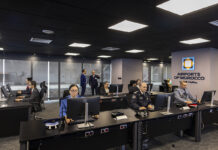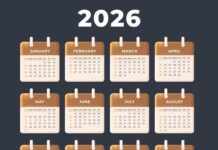Morocco’s linguistic diversity is a reflection of its rich cultural history, blending local and foreign influences. According to the General Population and Housing Census (RGPH) conducted by the High Commission for Planning (HCP), Arabic stands as the most dominant language, but Amazigh dialects and foreign languages also play significant roles in the daily lives of Moroccans.
Nearly the entire literate population aged 10 and older, a staggering 99.2%, can read and write in Arabic. This makes Arabic the universal language across the country, regardless of region or social background. However, alongside Arabic, Morocco’s indigenous Amazigh language retains its cultural importance, with 1.5% of the population able to read and write it using the Tifinagh script.
In daily communication, Moroccan Darija, a local dialect of Arabic, is by far the most used. Around 91.9% of Moroccans speak Darija, with usage slightly higher in urban areas, where 96.3% rely on it for everyday conversations, compared to 84.5% in rural areas. Regionally, the highest concentration of Darija speakers is found in Casablanca-Settat and Rabat-Salé-Kénitra, where it reaches an impressive 98.2%, while the lowest percentage is observed in Drâa-Tafilalet, where only 64.1% use it, due to the stronger presence of Amazigh dialects.
The Amazigh language, which includes three main dialects, remains prominent, particularly in rural regions. Tachelhit is the most widely spoken variant, used by 14.2% of the population, especially in Souss-Massa, Guelmim-Oued Noun, and parts of Marrakech-Safi. The second most spoken Amazigh dialect, Tamazight, is used by 7.4%, mainly in Drâa-Tafilalet and Béni Mellal-Khénifra, while Tarifit is spoken by 3.2% of Moroccans, predominantly in the Oriental region and Tanger-Tétouan-Al Hoceima. In Morocco’s southern Saharan regions, Hassaniya, a distinct Arabic dialect, is used by 0.8% of the population.
When it comes to foreign languages, French continues to hold a dominant position, with 57.7% of the literate population able to read and write it. Proficiency in French is particularly strong in urban areas, where 64.3% of residents speak it, compared to 42.1% in rural regions. Among the country’s major cities and regions, Casablanca-Settat has the highest rate of French mastery at 64%, followed closely by Rabat-Salé-Kénitra at 61.3%, and Souss-Massa at 60.1%.
English, on the other hand, is on the rise, particularly among younger generations. Nationally, 20.5% of Moroccans are proficient in English. This percentage is notably higher in the regions of Casablanca-Settat and Rabat-Salé-Kénitra, where it reaches nearly 24%, while in regions like Drâa-Tafilalet, the figure is lower, standing at 15.8%. Spanish, though less prevalent, is spoken by 1.2% of the population, mainly in the northern regions with historical ties to Spain, such as Tanger-Tétouan-Al Hoceima and the Oriental region. Other foreign languages account for 1% of the population.
In essence, Morocco’s linguistic landscape is a rich tapestry. While Arabic and Darija remain the cornerstone of communication for nearly all Moroccans, Amazigh dialects hold a strong cultural presence, especially in rural areas. French continues to dominate as the main foreign language, though English is steadily gaining ground as a language of the future.





